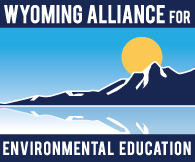What Is Environmental Education?
Definitions of environmental education have grown out of a two international declarations in the 1970s. These declarations were in response to a growing awareness of the social, economic and health consequences of environmental degradation. The first of these declarations, the Belgrade Charter, laid out the goal of environmental education…to develop a world population that is aware of, and concerned about, the environment and its associated problems, and which has the knowledge, skills, attitudes, motivation, and commitment to work individually and collectively toward solutions of current problems and the prevention of new ones. Belgrade Carter (UNESCO-UNEP, 1976)
This definition was expanded in the Tiblisi Declaration, which described a continuum from awareness to action. In this declaration, the goals of environmental education are:
-
- To foster clear awareness of, and concern about, economic, social, political, and ecological interdependence in urban and rural areas.
- To provide every person with opportunities to acquire the knowledge, values, attitudes, commitment, and skills needed to protect and improve the environment;
- To create new patterns of behavior of individuals, groups and society as a whole towards the environment. (UNESCO, 1978)
The awareness-to-action continuum is still the basis for environmental education in achieving ecological literacy. Ecologically literate citizens understand the connection between a healthy environment and healthy human communities, they care about the natural environment, and they take action to protect the environment and create sustainable relationships with it.
Environmental education includes a wide range of programs and curricula that teach about the environment. Programs may teach about the natural environment from purely a scientific perspective, examining how natural systems work. Some programs examine the impact of human activities on the natural environment, covering topics like watershed and forest/grassland health, energy production, or wildlife management. These programs often include political, economic, historical and cultural perspectives. Finally, there is an extremely important segment of the EE movement that is best defined as nature appreciation. These programs provide the “heart” that connects people to the environment and include art, music, and writing.
The above is but one attempt to define EE, a field that is so broad and rich with possibility that it has proved extremely difficult to assign a succinct, meaningful, universally accepted definition. In that respect, it is somewhat akin to an attempt to define art, philosophy, or religion. The concept of EE is incredibly wide and varied, encompassing any and all disciplines and educational settings. Ultimately, EE aims to establish an environmentally literate and aware citizenry and a sustainable society.
Environmental Education in Wyoming
In 2005, WAEE, with funding provided by US EPA, Region 8, Office of Environmental Education compiled a report on the status of environmental education in Wyoming. The State’s uniqueness – economy, educational system, and geography – were given careful consideration when analyzing the status of environmental education and making recommendations for improving access to EE. The report yielded significant findings and the conclusions serve as a guide for WAEE’s future efforts.
